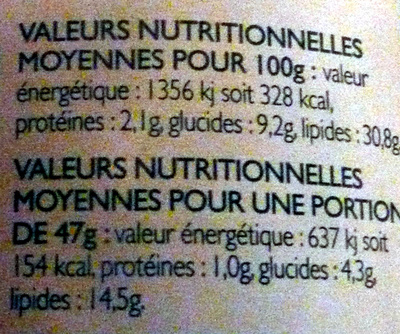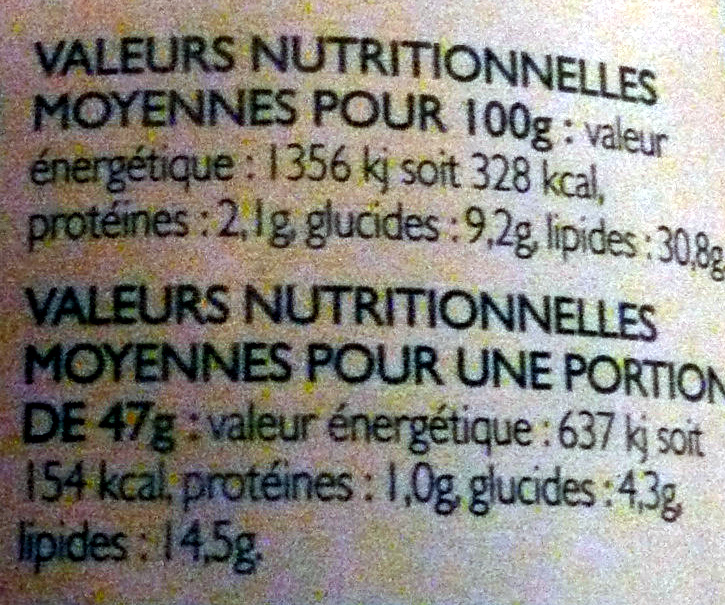Sauce tomate Poivron Aubergine - Auchan - 0.19 kg
Important note: this product is no longer sold. The data is kept for reference only. This product does not appear in regular searches and is not taken into account for statistics. (Withdrawal date: 2023/07/01)
This product page is not complete. You can help to complete it by editing it and adding more data from the photos we have, or by taking more photos using the app for Android or iPhone/iPad. Thank you!
×
Some of the data for this product has been provided directly by the manufacturer AUCHAN APAW.
Barcode: 3596710346561 (EAN / EAN-13)
Common name: Sauce cuisinée à base de poivrons, de tomates et d'aubergines
Quantity: 0.19 kg
Brands: Auchan, Auchan Gourmet
Categories: Condiments, Sauces, Groceries
Labels, certifications, awards: In braille
Manufacturing or processing places: France
Traceability code: EMB 84080I - Monteux (Vaucluse, France)
Stores: Auchan, Simply Market
Countries where sold: France
Matching with your preferences
Environment
Packaging
Transportation
Other information
Preparation: à la casserole:Chauffer à feu doux en remuant pendant environ 2 à 3 minutes. Attention à ne pas faire bouillir..au micro-ondes:Mettre dans un récipient adapté et chauffer à couvert pendant environ 1 min à 700 watts. Il est aussi possible de réchauffer dans le bocal mais en retirant la capsule.
Report a problem
Data sources
The manufacturer AUCHAN APAW uses Agena3000 to automatically transmit data and photos for its products.
Product added on by unteem
Last edit of product page on by org-auchan-apaw.
Product page also edited by kiliweb, openfoodfacts-contributors, packbot, segundo, tacite-mass-editor, yuka.SHBJU09wWUhoZGtwb2ZjOHdUbkkvYzFvOXFPNEJrem1HOUlNSWc9PQ, yuka.WHAwRkZKNGtyZFVveTgwbjFDSHYvL1I0bWM3MkRHUzFNK1lESVE9PQ, yuka.WHBoZE5Ja1J0NkVreHZFVXdrNzc0ZTVvMWNTMmQwYUpCUFVBSWc9PQ.










